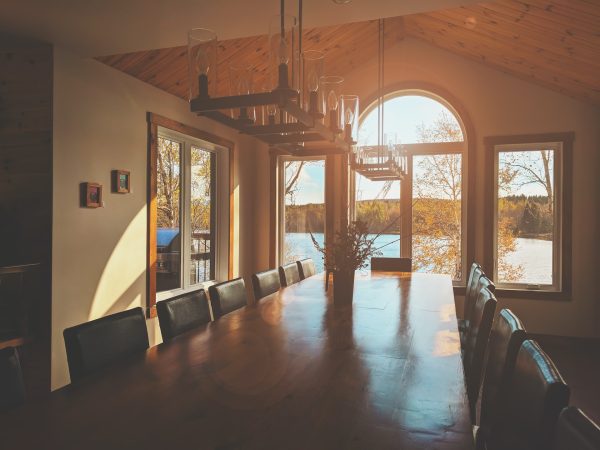From expansive cityscapes to quaint suburban streets, various architectural styles tell stories about the evolution of housing and the cultural shifts accompanying them.
One such form, the Ranch style house, speaks to a timeless desire for simplicity, functionality, and accessibility.
With its distinct characteristics, the Ranch style has become a symbol of mid-20th century suburban growth in the United States and remains a favorite for many homeowners today.
Ranch Style Houses: A Marriage Of Functionality And Aesthetics
Ranch style homes first gained popularity in the 1920s and flourished between the 1940s to the 1970s, especially in the American West.
These single-story dwellings are designed with a linear layout, focusing on horizontal lines and a close relationship to the ground.
Embracing both aesthetics and practicality, Ranch homes provide an enduring alternative to the multi-story domiciles of the past.
Common Architecture Traits
When you think of a Ranch style house, you might imagine a wide, sprawling structure with a low-pitched roof.
Indeed, this design typically shies away from the vertical and instead stretches out across the land.
Large windows, often facing the backyard, are another prominent feature, ensuring that ample light permeates every corner of the house.
The incorporation of mixed materials, such as brick, wood, or stucco, in the exterior is common, offering a sense of diversity and richness in appearance.
While this gives an idea of the overarching elements, the unique charm of each Ranch house lies in its details, be it the type of wood used for the finishes or the specific pattern of brickwork.
Integration With Surroundings
One of the most significant aspects of Ranch homes is their harmonious relationship with nature.
These homes often feature large, open yards or gardens that seamlessly transition from the interior spaces, thanks to sliding glass doors or big patios.
The goal is to blur the lines between the inside and outside. Whether you own a Ranch home or are planning to build one, consider the landscape design.
Opt for indigenous plants, create outdoor living spaces, or incorporate features like a water fountain to enhance the connection with nature.
Flexibility In Design
The inherent simplicity of Ranch style houses provides homeowners with a canvas that can be easily tailored.
From the choice of external paint colors to the interior design themes, there’s a lot of room for personalization.
Whether you lean towards a rustic, country charm or a sleek, modern vibe, the Ranch home can adapt.
This adaptability means that, as lifestyle trends change or a family’s needs evolve, the home can evolve with them, ensuring it remains both functional and aesthetically pleasing.
Modern Adaptations: Evolving With Times
With changing times and evolving architectural trends, the Ranch style house hasn’t remained static.
Instead, it’s been adapted to cater to modern sensibilities while retaining its fundamental essence.
Eco-Friendly Features
As the importance of sustainable living continues to grow, many Ranch homes now integrate eco-friendly features.
Solar panels, rainwater harvesting systems, and energy-efficient appliances have become standard in many new builds.
Moreover, the single-story layout of Ranch homes means a smaller carbon footprint, making them inherently eco-friendly.
Open Floor Plans
Contemporary living demands spaces that are versatile and interconnected.
Today’s Ranch homes often feature open floor plans, where the kitchen, living, and dining areas flow seamlessly into one another.
This not only creates a sense of spaciousness but also encourages familial interactions and communal living.
Modern Amenities And Tech Integration
While the traditional Ranch home was relatively straightforward in its design, modern versions incorporate the latest in-home technology.
From smart thermostats to integrated security systems, these homes are now at the cutting edge of convenience and safety.
Incorporating Ranch Elements In Today’s Homes
Even if you don’t own a Ranch style home, there’s much to learn and implement from its design principles.
The emphasis on functionality, openness, and a connection with nature are elements that can be integrated into almost any home.
Prioritizing Natural Light
Taking a leaf out of the Ranch design playbook, prioritize large windows, skylights, or glass doors in your home.
They not only flood spaces with natural light but also provide a mental boost, connecting occupants with the outside world.
Creating Seamless Indoor-Outdoor Transitions
Create spaces in your home that extend into your garden or yard.
It could be as simple as a breakfast nook by the window or a living room that opens out to a patio.
This not only enhances living space but also ensures you’re in touch with nature, even within the confines of your home.
Minimalism And Functionality
Modern homes can often become a cluttered mix of décor and belongings.
Adopting the Ranch’s simplicity ensures that every piece in your home serves a purpose.
This not only clears up physical space but also allows for a more streamlined and stress-free lifestyle.
Incorporating Ranch Aesthetics Into Urban Spaces
Urban environments often seem far removed from the sprawling landscapes where Ranch style homes traditionally thrive.
However, the design principles underlying the Ranch aesthetic can still be employed in city settings, providing a touch of simplicity and nature amidst the concrete.
Balcony Gardening And Green Spaces
In apartments or homes with limited ground space, balconies can be transformed into mini green sanctuaries.
With the right selection of plants, you can create a serene space reminiscent of the large gardens Ranch homes boast.
Incorporating hanging planters, climbing vines, and compact shrubs can conjure the essence of nature in restricted spaces.
Open Interiors With Dividing Elements
While urban homes may not have the expansive interiors of Ranch homes, they can still embrace the open-concept living.
Instead of walls, use elegant dividers, sliding panels, or even furniture arrangement to demarcate areas.
This ensures a sense of space and free movement within constrained dimensions.
Natural Material Accents
Ranch homes are known for their use of materials like wood and stone.
Introduce these into urban homes through wooden panels, stone countertops, or even brick walls.
Such elements not only provide tactile warmth but also infuse a bit of the countryside into city dwellings.
Closing Thoughts
In conclusion, while architectural styles come and go, the Ranch style house stands out for its perfect blend of functionality and aesthetic appeal.
Whether you’re building a new home or renovating an existing one, its principles provide a timeless guide to creating spaces that resonate with modern lifestyles.





















